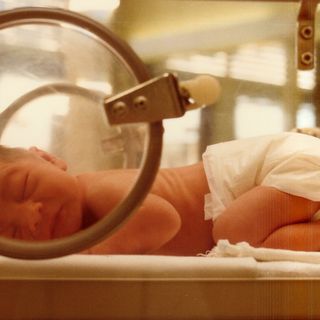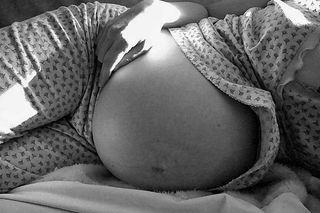
Global Study: Sleep Position During Pregnancy Affects Stillbirth Risk
To lower stillbirth risk, study authors advise pregnant women to sleep on their side.

A new, mega study of global research has confirmed a long-suspected link between stillbirth and sleeping position during pregnancy. Habitually falling asleep while lying on one’s back in week 28 of pregnancy and beyond increases the risk of stillbirth by 2.6%, concluded the review, published in the international medical journal The Lancet.
It is the first confirmed risk factor for stillbirth that is easily within women’s ability to impact. Other known risk factors include a maternal age above 40, obesity, cigarette smoking during pregnancy and poor fetal development.
However, India, with of the highest stillbirth rates in the world — 23% — has additional risk factors: lack of access to antenatal care, poor maternal nutrition and/or anemia, poverty, lack of access to transportation and poor living conditions also contribute to stillbirth here, according to a 2016 report also published in The Lancet.
But all of these other factors actually make the information about sleeping position more powerful. The risk of stillbirth from supine sleeping position during the seventh, eighth and ninth months of pregnancy is additive — meaning it increases risk on top of whatever other risk is already there.
Sleeping on your back while pregnant affects blood flow
Sleeping on one’s back can allow the weight of the womb to compress the body’s major blood vessels and, thus, blood flow to the womb, placenta and baby — by as much as 80%. The image below is a comparison of MRIs taken of a pregnant woman with the major blood vessels highlighted; in the left, when the woman is positioned on her side, the MRI reveals both the aorta and the inferior vena cava open, while the scan on the right, of a pregnant woman lying on her back, shows the aorta slightly compressed and the inferior vena cava nearly blocked.

Left: An MRI showing blood flow of a pregnant woman lying on her side. Right: An MRI showing blood flow of a pregnant woman lying on her back. Image courtesy CC BY-SA
“Although the mother’s circulation responds by increasing the flow through other veins, this does not fully compensate,” the study authors explained in an article for The Conversation. “We speculate that while healthy unborn babies can compensate for the reduced blood supply, babies that are unwell or vulnerable for some other reason may not cope.”
This hypothesis is supported by their study’s finding that the risk of stillbirth is 16 times more likely for a woman who is pregnant with a very small baby and who also typically falls asleep on her back.
The authors advise third-trimester women who are back-sleepers to position themselves on their side whenever they rest — at night, for a nap, etc — even if they wake up on their backs.
Which side to sleep on during pregnancy?
Some doctors advise that pregnant women position themselves specifically on their left sides, but that recommendation is more theoretical than proven, experts say. The safest sleeping position while pregnant in the third trimester is either side.
“There’s not a lot of research comparing sleeping on the right and left side, but at least theoretically, you’d also have less potential compression of the IVC on your left side than on your right,” Dr. Grace Pien, an assistant professor of medicine at the Johns Hopkins University School of Medicine, told Live Science. “If there’s a reason somebody is sleeping on their right because they’re more uncomfortable sleeping on their left, I don’t think there’s a reason not to do it.”
Liesl Goecker is The Swaddle's managing editor.
Related


Survey Suggests Relationship Potential, Not Safety, Decides Condom Use
